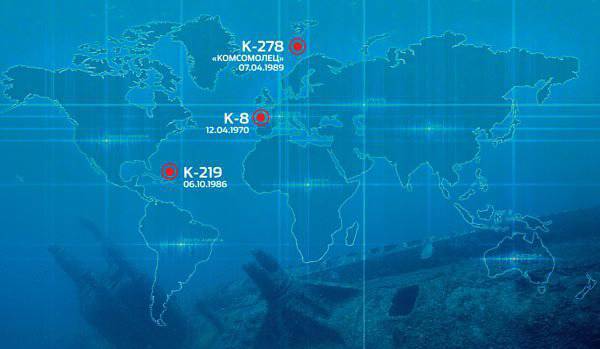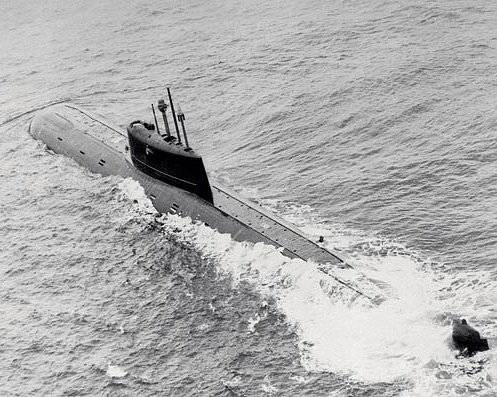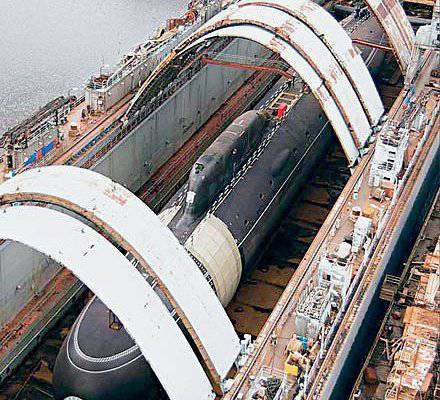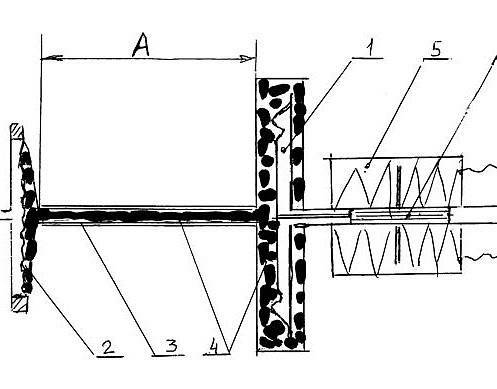How to save nuclear submarines?

On April 7, 1970, completing military service in the Mediterranean and entering the Atlantic, the Soviet submarine K-8 of the project 627A headed for its northern base. Suddenly, in its third compartment, chemical regeneration cartridges ignited, intended to clean the ship's atmosphere. It took quite a bit of time for the fire to escalate into a full-scale fire. As it should be, the emergency protection of the reactors worked, the turbines stopped. The reserve diesel generator could not be started, and the submarine was left without electricity, which significantly complicated the struggle for survivability, which nevertheless lasted more than three days. Having blown the ballast tanks, the boat floated to the surface. Meanwhile, the fire spread through the ship. Outboard glands burned out in two stern compartments (seals of cables removed from the solid hull of the boat). Water began to flow into the compartments, which led to the onset of increasing negative trim (inclination to the stern). After two days, the supply of high-pressure air dried up, and there was nothing to restrain the flow of water into the compartments. The ship was doomed, it was necessary to save the crew. Approached surface ships removed part of the sailors. And the center continued to receive categorical orders - until the last fight to save the ship. On the morning of April 12, the process of increasing the trim was avalanche-like, and the boat, taking almost upright position astern, swiftly went to the bottom, taking the lives of 52 sailors with it.
After 16 years after this tragedy, another Soviet APL was in distress again in the waters of the Atlantic. Now it was K-219, a strategic submarine carrying 16 ballistic missiles with nuclear charges in its mines. October 16 The 1986 of the year in the boat on duty, a fire broke out in the missile compartment. The cause of the fire is the destruction of the rocket with the subsequent violation of the tightness of the mine and hit of the propellant components in the compartment. Further, the development of the catastrophe took place according to the already familiar scenario: fire spreading into compartments, burning outboard seals, water entering the compartments and, as a result, increasing trim, which led to the loss of longitudinal stability by the boat. After the 15-hour stubborn, but ineffectual struggle to save the ship, its rapid flooding occurred. This time they took into account the sad experience of K-8 and most of the crew were transported in time to the approached ships. On the boat were only nine people headed by the captain. Five of them managed to escape, four with the submarine rested on the ocean floor at a depth of about 5000 m.

Less than three years later, the Soviet Navy was shocked by a new tragedy - the death of the Komsomolets submarine. This unique ship, built according to the 685 project developed by the Rubin Central Design Bureau (code “Fin”), entered the Guinness Book of Records after the World Record Depth Depth for combat submarines (1985 m) was established in 1027. 7 April 1989 of the year in 11 hours, when the submarine, being at a depth of 400 m, was returning from its fifth autonomous voyage, a fire broke out in its stern 7 compartment. After only 11 minutes the boat, completing an emergency ascent, was on the surface of the Norwegian stormy sea. A desperate struggle began to save the ship. And again, as in the cases already described, the flow of water into the feed compartments led to a negative trim.
About upsetting and landing
Here it is necessary to explain why this process is so dangerous for submarines. One of the most important characteristics of any displacement vessel is stability, considered as the ability of a vessel, deduced by an external influence from a position of equilibrium, to return to it after the termination of this influence. There are transverse and longitudinal stability, that is, the ability to restore equilibrium after the occurrence of roll or trim, respectively. The submarine, whose spindle-shaped hull has a length substantially greater than the width, is particularly sensitive to trimming - deviations from the horizontal position in the longitudinal direction. When the boat is in motion, the differences arising for one reason or another are canceled by the action of its horizontal hydrodynamic rudders. But on the boat, not having a course, hydrodynamic control surfaces, of course, do not work. You can fight with trimings only by moving the weight loads inside the ship relative to its center of gravity, reducing them from the side where the inclination takes place, or increasing them from the back side to level the boat. In reality, this procedure consists in purging one and filling with water other ballast tanks located in the bow, stern and along the sides of the submarine. Naturally, from whatever side of the center of gravity weight increases, this leads to an increase in the draft of the ship - the third (along with roll and trim) parameter determining the landing of the ship in the sea. Landing, which has a serviceable ship in calm water, called equilibrium. At the same time, roll and trim are completely absent, and the draft is such that the ship is immersed in water at a constructive (calculated) waterline. When the submarine is on the surface in the stormy sea, the waves, swinging it, continuously change all three parameters that determine the landing. If the submarine is in the normal (intact) state and possesses the necessary stability, its oscillations occur relative to the equilibrium position and do not pose a danger, unless, of course, they exceed critical values. The situation is completely different when, as a result of the accident and the resulting damage, the submarine has a landing other than equilibrium in the surface position, that is, when even in the absence of sea agitation the angles of heel and trim of the ship are not zero, and its draft is not at a constructive waterline. This circumstance must be continuously taken into account during the struggle for survivability of emergency submarines. Fighting fire by flooding emergency compartments, leveling the roll or trim that has arisen using the method of blowing ballast tanks (especially located in the bow or in the stern of the boat), one should understand how these measures affect the change in trim. It is not at all easy to do, since subjective perception can fail, and there is no place to get objective information about the real spatial position of the boat.
In the case of the Komsomoltsa catastrophe, practically the entire struggle to save the nuclear submarine took place on the surface and lasted for almost six hours. The fire, which spread to three fodder compartments, was managed to be tamed. But in the fight against fire, a number of mistakes were made, leading to a gradual but steady increase in negative trim. Less than an hour before the death of the submarine, its feed sank into the water so that a sufficiently high feed stabilizer disappeared under water. By this time, the value of the longitudinal stability of the boat remained so small that the further rapid growth of the trim and the close tragic outcome was obvious. This was confirmed by photographs taken from a rescue aircraft arriving from Severomorsk. In 17: 08, the trim boat on the stern at 80 ° (that is, almost vertically) went under water. The crew, who was on the upper deck, was in the icy water. Of the 69 sailors, 27 survived.
So, all three catastrophes, starting with a fire, ended in the destruction of the submarine as a result of the loss of longitudinal stability and instantaneous flooding. This was noted in the documents of the government commission working to establish the causes of death of Komsomolets. The Commission commissioned one of the enterprises of the Ministry of Shipbuilding to develop a set of hardware designed to objectively monitor the parameters of the landing of submarines in an emergency. The results of the development were planned to be used in the projects of next-generation submarines.
Elemental Mathematics
The terms of reference prepared one of the CDB, designed the submarine. Development work (OCD) began in 1993 year. It soon became clear that the main problem was the absence of an algorithm with which it would be possible to determine the parameters of a ship’s landing under the conditions of the random nature of sea waves. Therefore, it was from the search for the algorithm that OCD began. Experts of many leading scientific and design organizations of shipbuilding and the Navy were involved in its development. Together with them, they created and tested methods of mathematical modeling and experimentally three variants of the algorithm. One of them (the algorithm of the professor at the Sevastopol Instrument-Making Institute, Yu. I. Nechaev) was approved by the customer of the development, the Shipbuilding Research Institute, and was adopted for use in development projects.
The Nechaev algorithm was developed by analyzing the materials of experiments conducted using radio-controlled models of various types of marine vessels under natural waves. Then it was tested on one of the ships of the Black Sea fleet and on ships of the transport fleet.
The principle of operation developed in accordance with this algorithm KPORP based on continuous monitoring of the current values of the three parameters of the landing ship: angles of heel and trim, as well as draft. All these parameters for an emergency ship in conditions of sea excitement are random. Accumulated for a certain period, the data for each of the parameters are averaged over time, and then the results obtained are supplemented with the corrections calculated in accordance with the adopted algorithm.

Sensitive tubes
The implementation of the adopted KPORP algorithm is carried out using a set of sensors of the current values of heel, trim and draft. For measuring the angles of roll and trim, two sensors that were maximally standardized with each other were developed, one of which (inclinometer) is located in the plane of the mid-frame (average cross section of the submarine hull) and the second (trimometer) in the center plane of the ship. The principle of the sensor is based on the control of pressure or vacuum that occurs in the inner cavity of a highly sensitive membrane box as a result of the inclination of a tube connected to this cavity filled with a special non-freezing liquid of a certain density. When, at roll (trim) of the ship, the end of the tube is above the membrane box, some excess pressure occurs in the cavity of the box, which is proportional to the length of the tube multiplied by the sine of the angle of inclination and the specific weight of the fluid filling the tube. When tilting in the opposite direction, the end of the tube is lowered relative to the membrane box, which causes a vacuum in it that is proportional to the same values. To seal the cavity filled with liquid, as well as to compensate for the thermal expansion of the liquid, an elastic diaphragm of almost zero stiffness, mounted on the end of the tube opposite to the membrane box, serves. It also serves to compensate for fluctuations in air pressure in the compartment, equally affecting both the outside of the membrane box and the elastic diaphragm. When a pressure (or depression) occurs in the cavity of the membrane box (due to tilting), it flexes elastically, and its center moves to one side or the other of the core of the electrical transducer, at the output of which a signal of the corresponding polarity arises. The roll and trim sensors differ from each other only by one basic dimension — the length of the tube filled with liquid, which is inversely proportional to the sine of the limit value of the monitored angle. Due to the fact that the limiting values of the trim angles are significantly less than the heel, to get the same signal at the output of both sensors, the trim sensor tube must be longer.
The measurement of the draft is carried out by a pair of pressure drop sensors, the dynamic cavity of which is connected with the overboard space under the submarine heading, and the static cavity with the atmosphere. They use two identical differential pressure sensors with different measuring limits, placed in the same plane and on the same vertical, but in different levels. Depending on the actual value of the current draft, readings are taken from one of the sensors (upper or lower), achieving the required measurement accuracy. When converting the hydrostatic pressure to the draft in the coordinate system associated with the ship's hull, the current values of the heel and trim angles are taken into account.
The set of devices also includes a block of secondary transducers of the above-named sensors and a computational information unit (WBI), which is a mini-computer. The output data is sent to the WBI, which implements the algorithm entered into its memory, and also provides for the introduction of amendments to the values of the measured parameters.
The model KORPP was manufactured and passed under the supervision of the interdepartmental commission a multi-stage test cycle, including tests of resistance to all types of mechanical and climatic influences, as well as tests on a multi-dimensional roll stand. At the same time, the serviceability of a KPORP was tested with separate and simultaneous effects of two types of pitching with the setting of roll and trim angles that simulate the emergency position of the ship. The test results confirmed the full compliance of the TORC with the requirements of the TOR, both in terms of the accuracy of determining the equilibrium landing parameters and in terms of resistance to all types of shipborne effects.
Pressure game
A complex of original technical solutions helped to maintain a constant automatic control over the landing of the underwater ship. The sensor system responds to changes in fluid and air pressures.

Information